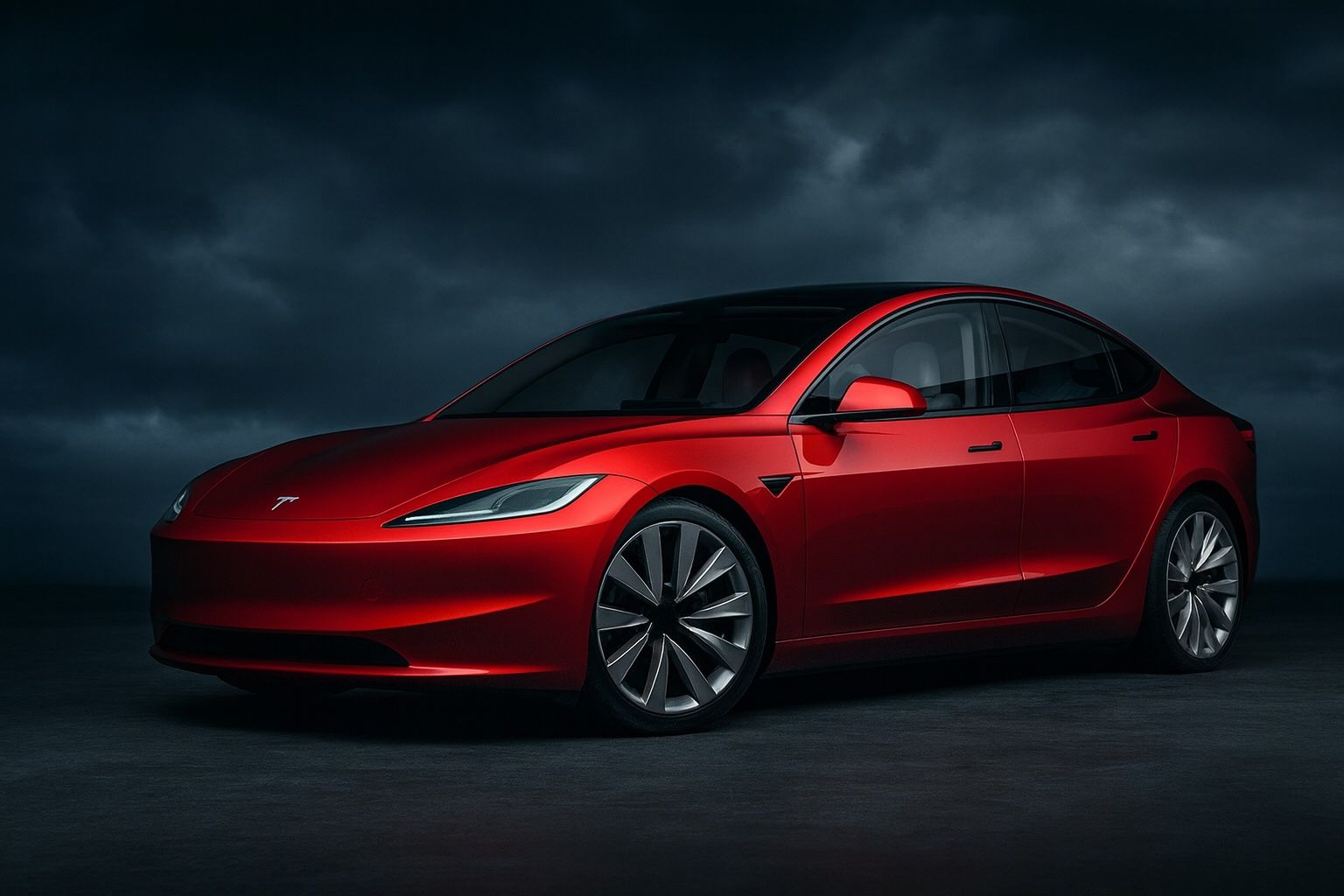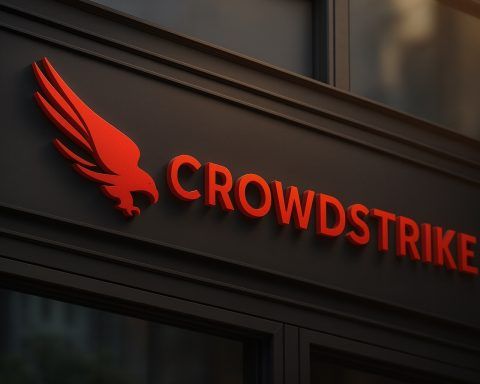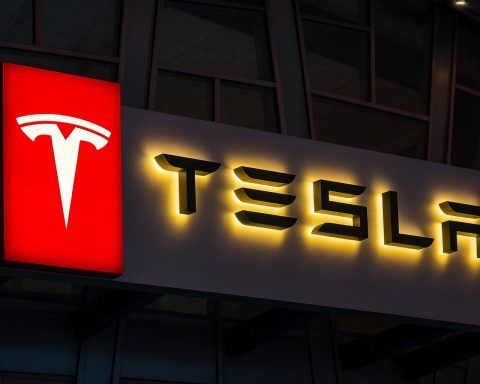Key Facts on Oct. 2, 2025 (TSLA – NASDAQ)
- Share price and performance: Tesla’s stock closed at ≈$459 per share on Oct. 1–2 2025. According to the historical prices table, TSLA opened Oct. 2 at $470.54, hit a high of $470.75, dipped to $454.35 and finished the day around $459.00, with 36.02 million shares traded [1]. The closing price of $459 is roughly –2.38 % lower than the previous day, but still part of a run where TSLA had gained nearly 8 % over the prior two weeks [2].
- Market capitalization: At the start of October 2025 Tesla was valued at $1.526 trillion, making it the ninth most valuable company globally. Its market cap reflects a share price around $459.17 and a one‑day change of –0.06 % [3].
- Valuation metrics: Analysts note that Tesla trades at a price‑to‑earnings (P/E) ratio around 243, calculated from a trailing‑twelve‑month EPS of $1.89 and a share price near $459 [4]. This P/E ratio is 78 % higher than the average of the last four quarters, signalling stretched valuation [5]. The P/E is also much higher than major automakers and even many technology companies [6].
- 52‑week range: Over the previous year TSLA’s closing price has ranged from a low of $212.11 to a high of $488.54; the current price is roughly 6.4 % below the 52‑week high and 53.8 % above the 52‑week low [7]. The average price for the past year is $326.97, illustrating just how far TSLA has run [8].
- Q3 2025 deliveries and tax credit effect: Tesla delivered 497,099 vehicles in Q3 2025 – well above expectations – as buyers rushed to benefit from the $7,500 U.S. tax credit before it expired [9]. Production of its Model 3 and Y lines reached roughly 482,682 vehicles, while “other models” (Cybertruck and Semi) accounted for 5,687 vehicles [10].
- Analyst expectations: Analysts polled by Visible Alpha had expected around 446,790 deliveries, so the actual figure beat estimates by ~50k vehicles [11]. However, a slump is projected for Q4 because the tax credit pulled demand forward and European sales were weak (Tesla’s European deliveries fell 22.5 % and its market share fell to 1.5 %) [12].
- New products and initiatives: Tesla is launching a long‑wheelbase “Model Y L” tailored for China and has started a pilot robotaxi service in Austin [13]. Rumours also swirl about an upcoming low‑cost mass‑market vehicle and continued progress toward Full Self‑Driving (FSD) [14].
- Energy business: The company’s energy storage deployment reached 12.5 GWh in Q3, indicating rapid growth in the energy segment [15].
- Technical signals: Chartists note that TSLA has been rising for 7 of the last 10 trading days, gaining ~7.9 % in two weeks and breaking a rising trend channel. Indicators show high volatility (daily range 4.86 %) and an overbought relative strength index, yet the stock receives a “strong buy” rating with support at $410 and resistance near $533 [16].
Recent News & Narrative (late Sept – Oct 2 2025)
Earnings and Deliveries Drive Headlines
Major financial news outlets were fixated on Tesla’s Q3 2025 delivery report, which served as a proxy for its revenue trajectory. Reuters reported that Tesla delivered 497,099 vehicles, beating expectations thanks to U.S. buyers rushing to claim a $7,500 electric‑vehicle tax credit before it expired [17]. Despite the strong overall number, deliveries in Europe dropped 22.5 %, shrinking Tesla’s market share to 1.5 % amid growing competition from plug‑in hybrids and Chinese EVs [18]. Analysts expect a sales slump in Q4 because the tax credit pulled forward demand [19].
Electrek highlighted that Tesla produced 479,106 vehicles and delivered 497,000, implying a reduction in inventory. The site noted that Tesla deployed a record 12.5 GWh of energy storage and that CEO Elon Musk is prioritising deliveries over profit margins, implying Q4 could be challenging [20]. Meanwhile, a separate Investopedia briefing emphasised that analysts had previously expected 446k deliveries; the surprise beat, along with advances in self‑driving and AI, helped Tesla shares gain about 2 % in pre‑market trading [21].
Analyst and Market Commentary
The robust Q3 deliveries revived bullish commentary from some analysts. Tech‑focused investor newsletters praised Tesla’s progress in AI, robotics and self‑driving technology, suggesting these could unlock new revenue streams. Market commentators also noted optimism around a low‑cost mass‑market EV and improvements in FSD [22]. However, Reuters and other outlets balanced the enthusiasm with caution: weak European sales and an anticipated post‑credit slump mean Tesla must deliver 389,498 vehicles in Q4 to hit its full‑year target of 1.61 million vehicles [23]. Some analysts believe the company’s focus on growth may continue to pressure margins, especially as Tesla cuts prices to stimulate demand.
Technical analysts from StockInvest.us pointed out that TSLA had been overbought on the relative strength index but still offered a strong‑buy signal, with a projected fair opening price around $454.13 on Oct 2 and a possible intraday range of $451–$468 [24]. The analysis warned that volatility could lead to large swings and suggested investors monitor support levels around $410 and $395 [25].
Broader Industry & Strategy Context
Tesla’s results must be understood within a dynamic EV market. The U.S. EV tax credit created a temporary demand surge in Q3, but its expiry is likely to weigh on Q4 deliveries [26]. In Europe, the company faces fierce competition from Chinese manufacturers and plug‑in hybrids, resulting in a double‑digit sales drop [27]. To counter, Tesla is rolling out a long‑wheelbase Model Y “L” in China aimed at families and experimenting with a robotaxi service in Austin [28].
Investor attention is also turning toward Tesla’s energy division. With 12.5 GWh of storage deployments in Q3, Tesla is positioning itself as a major player in grid storage and residential batteries [29]. Additionally, speculation about a new mass‑market EV (often referred to as the “$25,000 model”) is building; enthusiasts believe it could dramatically expand Tesla’s addressable market [30]. However, some commentators caution that regulatory hurdles and intensifying competition from established automakers could slow Tesla’s growth [31].
Corporate Governance and Executive Incentives
Reuters reported that Tesla’s board has proposed a new CEO award that could be worth up to $1 trillion if Elon Musk meets certain market‑value and operational milestones [32]. The award is designed to keep Musk focused on Tesla as he juggles roles at SpaceX, X (formerly Twitter) and other ventures. Investors are watching whether the proposal will be approved and how it might align Musk’s incentives with long‑term shareholder value.
In‑Depth Analysis & Outlook
Valuation vs. Fundamentals
Even after the Q3 delivery beat, Tesla’s valuation remains extraordinarily rich. A P/E ratio around 243 means investors are paying more than two hundred times earnings for each TSLA share [33]. The ratio is almost 78 % higher than Tesla’s average P/E over the previous four quarters, indicating expectations for explosive earnings growth [34]. For comparison, most legacy automakers trade at single‑digit P/E ratios, while tech giants like Apple and Microsoft typically trade between 20–35× earnings. To justify the current valuation, Tesla must deliver sustained revenue growth from vehicle sales, software (FSD subscriptions) and energy storage while maintaining margins in the face of intense competition and potential economic headwinds.
Near‑Term Catalysts
- Q4 Deliveries and Earnings: Tesla needs to deliver nearly 390k vehicles in Q4 to reach its full‑year target of 1.61 million units [35]. Without the U.S. tax credit tailwind, hitting this figure will require strong demand in China and the U.S. as well as improved European performance. Investors will scrutinise whether price cuts or new models can sustain volume without further margin compression.
- Product Launches: The long‑wheelbase Model Y L may help Tesla regain traction in China; launch success will signal the company’s ability to tailor products for regional tastes [36]. A rumoured mass‑market EV priced around $25k could broaden Tesla’s customer base and drive unit growth [37].
- Robotaxi & FSD: A pilot robotaxi service in Austin suggests Tesla is inching toward its vision of autonomous ride‑hailing [38]. Any tangible progress on Full Self‑Driving could unlock software revenue streams and justify the high valuation [39].
- Energy Business Expansion: Deployments of 12.5 GWh of energy storage in Q3 show the growing importance of this segment [40]. Large utility‑scale projects and residential battery sales could diversify Tesla’s revenue and improve stability.
Risks and Challenges
- Demand Fluctuation: The expiration of the U.S. tax credit and economic uncertainty could cause Q4 demand to taper off [41]. Weakness in Europe and competition from Chinese EV makers and plug‑in hybrids add to this risk [42].
- Valuation Vulnerability: A P/E ratio above 240 leaves little margin for error [43]. Any miss on deliveries, margins or regulatory delays could trigger a sharp correction. Technical analysis already shows an overbought condition and high volatility [44].
- Regulatory and Geopolitical Risks: Trade tensions, evolving emissions standards and potential tariffs on Chinese components could increase costs or limit sales. The proposed $1 trillion CEO award may also draw governance scrutiny [45].
Analyst Sentiment and Forecasts
Opinion on TSLA is split. Bulls point to Tesla’s dominant position in EVs, its first‑mover advantage in autonomy, the burgeoning energy business and the possibility of a low‑cost model driving volume. Bears emphasise the high valuation, margin compression from price cuts and intensifying competition. Technical forecasters at StockInvest.us currently assign TSLA a “strong buy” rating with a target range of $451–$468 in the near term and resistance at $533 [46]. Meanwhile, mainstream analysts expect a volatile Q4 and caution that growth may slow without new incentives or product breakthroughs [47].
Conclusion
On Oct. 2 2025 Tesla stood at a crossroads. Its stock price of around $459 reflects massive investor optimism and has propelled the company to a $1.5 trillion market cap, making it one of the world’s most valuable enterprises [48]. A blowout Q3 delivery number highlights Tesla’s ability to rally demand when incentives align [49], yet the looming expiration of tax credits, high valuation and intensifying competition cast uncertainty over the coming quarters. For prospective investors, the key question is whether Tesla can translate its technological leadership in EVs, autonomy and energy into sustained earnings growth that justifies its lofty multiple. The coming months — featuring Q4 deliveries, new product launches and progress in autonomy — will likely determine whether TSLA’s meteoric momentum continues or faces a gravity‑defying test.
In summary, the report chronicles how Tesla’s share price hovered around $459 on October 2, 2025, with a two-week surge of nearly 8 %, yet its valuation was stretched at roughly 243 times earnings—about 78 % above its four-quarter average [50] [51]. Despite weak European sales and an impending demand lull after a U.S. tax-credit expiration, Tesla achieved a record 497,099 deliveries in Q3, lifting its market capitalization to about $1.526 trillion [52] [53].
I also note that technical analysts issued a “strong buy” rating, forecasting support around $410 and resistance near $533, while broader commentary pointed to risks from valuation, competition and regulatory headwinds [54]. The company’s nascent energy business, robotaxi pilot and rumored low-cost model could provide future catalysts, but hitting the full-year target of 1.61 million deliveries requires nearly 390,000 vehicles in Q4—without the boost of tax incentives [55]. Investors must weigh these bullish innovations against the risk of a post-credit slump and elevated market expectations.
References
1. stockanalysis.com, 2. stockinvest.us, 3. companiesmarketcap.com, 4. fullratio.com, 5. fullratio.com, 6. companiesmarketcap.com, 7. www.macrotrends.net, 8. www.macrotrends.net, 9. www.reuters.com, 10. electrek.co, 11. www.investopedia.com, 12. www.reuters.com, 13. www.reuters.com, 14. www.quiverquant.com, 15. electrek.co, 16. stockinvest.us, 17. www.reuters.com, 18. www.reuters.com, 19. www.reuters.com, 20. electrek.co, 21. www.investopedia.com, 22. www.quiverquant.com, 23. www.reuters.com, 24. stockinvest.us, 25. stockinvest.us, 26. www.reuters.com, 27. www.reuters.com, 28. www.reuters.com, 29. electrek.co, 30. www.quiverquant.com, 31. www.quiverquant.com, 32. www.reuters.com, 33. fullratio.com, 34. fullratio.com, 35. www.reuters.com, 36. www.reuters.com, 37. www.quiverquant.com, 38. www.reuters.com, 39. www.quiverquant.com, 40. electrek.co, 41. www.reuters.com, 42. www.reuters.com, 43. fullratio.com, 44. stockinvest.us, 45. www.reuters.com, 46. stockinvest.us, 47. www.reuters.com, 48. companiesmarketcap.com, 49. www.reuters.com, 50. stockinvest.us, 51. fullratio.com, 52. www.reuters.com, 53. companiesmarketcap.com, 54. stockinvest.us, 55. www.reuters.com










